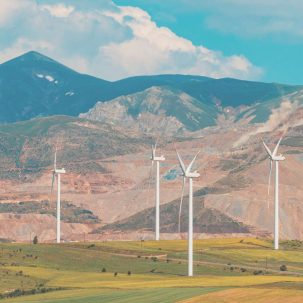Author: Jo-Jo Hubbard, CEO and Co-Founder of Electron
In my last blog, I argued that the emergence of large, dependable energy flexibility markets would transform the business case for electrifying new processes and investing in new clean energy assets, such as storage and EVs.
This in turn unlocks GWs of new flexibility that can be harnessed to reduce peak strain on their local networks and connect new clean energy assets to that same grid, faster.
It works like this. The greater the capability of our energy system to increase or decrease load at particular times and locations on the grid, the faster we can build out the most needed energy and network assets, the faster we decarbonise a resilient, domestically secure energy system. Phew!
I was interested, however, by how many people got in touch to express surprise at seeing flexibility conceptually coupled with network expansion. So, that became the next blog topic.
Flexibility markets and network expansion are not opposing forces; they are colleagues
The narrative on flexibility is all too frequently conflated with the deferral or avoidance of a network upgrade. It is thought of as a temporary stop gap before the big capacity expansion, which makes it something of side show.
Afterall, the push to Net Zero energy means western economies need to build three to five times more grid in the next ten years than they have built in the last thirty.
But flexibility is not ONLY an alternative to network expansion. This reductionist argument considers flexibility markets only as a point-to-point solution at a single snapshot in time.
Rather, network expansion is a process that is going to take the next few decades. Its speed and priorities will be largely set by flexibility markets.
Moreover, flexibility markets enhance and accelerate smarter new connections. This is particularly the case for energy processes that charge, heat, or cool and can themselves offer more flexibility back to the grids that are expanding to fit them.

To build, or not to build (yet): The option value of flexibility
Network operators are constantly balancing decisions on where and when to defer capital expenditure (CapEx) and focus on optimisation of network utilisation, versus the need to invest in new infrastructure at the right time, in the right location to enable their customers to consume, decarbonise, and create economic value.
Over the summer, UK networks reported almost £200m savings in network upgrade deferrals alone, achieving 30% of the total savings forecast in the first year of a five-year price control. This is meaningful.
Also, it pales in comparison to the estimated £3.1bn forecast spend on network reinforcement over the next five years. But the value of flexibility is also going to be felt within this expansion spend.
What you don’t see in these savings is the role flexibility markets play in giving network operators more data and visibility to get capital deployment decisions right and build where there is the greatest return on their grid assets, while still meeting demand.
For example, deferring a network upgrade from 2024 to 2027 doesn’t just mean that the 2024 plan will be enacted three years later. By 2027, network operators have new load growth forecasts. They also have more data from concurrent flex markets to better forecast new load. E.g. how “peaky” will their needs be? How responsive can they be to sharper price signals?
All this new information helps crystallise how much they will have to pay to procure more flexibility and at what times it will be available. That, in turn, informs where and when the next best network upgrade should take place.
Smart connections sit at the heart of economic growth
Our future economic prosperity and our drive towards Net Zero are inextricably linked. Every asset we can connect to the grid increases the amount of power we can generate to support industry and drive GDP growth.
And while delayed connections cost us a minimum of £300k per MVA per year, each successful one feeds into a virtuous cycle of economic growth, job creation, and energy security.
As we argued with our value/volume thesis blog, flexibility markets make network expansion and the complementary increase in demand for cheap, abundant renewable power entirely self-fulfilling.
The more of this inherently variable abundance we can harness, the more flexible demand we will see connecting.
As flex markets grow, progressive industries will look to take advantage of cheap energy when they need it. In a Net Zero world, cheap power is in demand, but rarely is it needed 24/7.
So, we start to see an economy that embraces a variable energy supply rather clinging on to the outdated notion that gas is still the check and balance that underpins energy security and stability.
Build and flex; build and flex…
If we’re to meet our 2050 Net Zero goals, let alone our 2030 ones, flexibility needs to be used. Not only as a way of making best use of existing grid capacity, but as a key tool in informing decision-making on building new network infrastructure.
Flexibility should not sit in a little box labelled “investment upgrade deferrals”. Rather, done right, there’s a symbiotic relationship between flex availability and network expansion that has a massive material impact on both shareholder value for utilities and economic output for countries.




